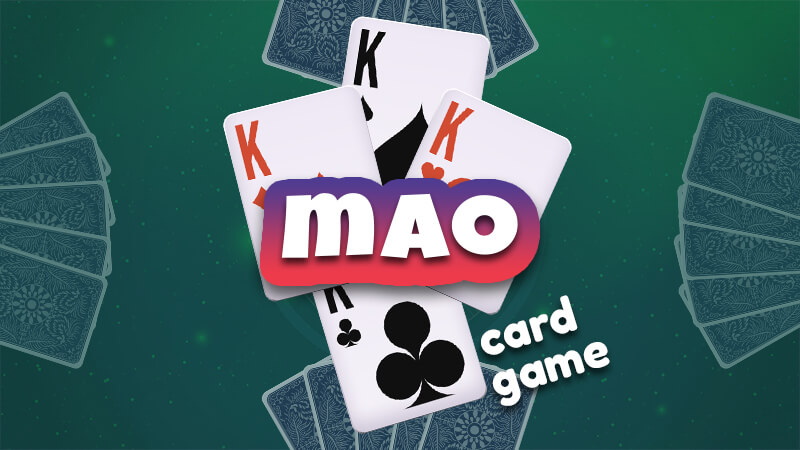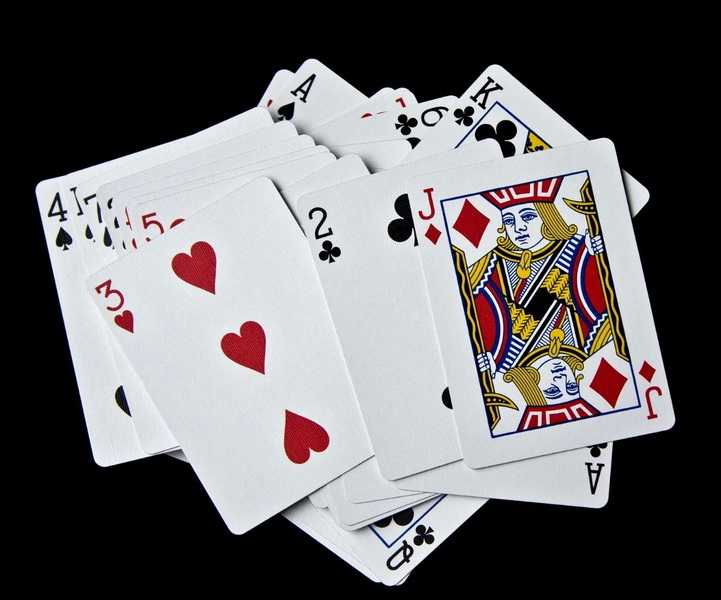Content Menu
● Introduction
● The Basics of Mao
>> Setting Up the Game
>> Dealing the Cards
>> Starting the Game
● Gameplay Mechanics
>> Basic Turn Structure
>> Special Cards and Actions
● The Unspoken Rules
>> Common Unspoken Rules
● Penalties and Enforcement
● Strategies for Success
>> Observation is Key
>> Embrace the Learning Process
>> Maintain a Poker Face
>> Be Quick and Decisive
● Variations and House Rules
● Teaching Mao to New Players
● The Social Aspect of Mao
● Ethical Considerations
● Conclusion
● Common Questions About Mao
>> 1. Is it necessary to explain all the rules to new players before starting?
>> 2. How do you win a game of Mao?
>> 3. Can new rules be added to the game?
>> 4. How do you handle disputes about rules or penalties in Mao?
>> 5. Is Mao suitable for all ages and group sizes?
● Citations:
Introduction
Mao is a fascinating and unique card game that combines elements of traditional card games with a twist of mystery and intrigue. Known for its unconventional approach to gameplay, Mao is often described as half card game and half prank. The primary objective is simple: be the first player to get rid of all the cards in your hand. However, the journey to achieve this goal is far from straightforward, as players must navigate through a maze of unspoken rules and unexpected penalties.

The Basics of Mao
Setting Up the Game
To begin a game of Mao, you'll need a standard deck of 52 playing cards. For larger groups, it's recommended to use one deck for every 2-3 players[1][5]. The game can accommodate various numbers of players, but it's most enjoyable with 3-7 participants.
Dealing the Cards
The dealer shuffles the deck and distributes seven cards to each player[1][5]. The remaining cards are placed face-down in the center of the table, forming the draw pile. The top card is then flipped over and placed next to the draw pile to start the discard pile.
Starting the Game
Once the cards are dealt, players are not allowed to touch their cards until the dealer officially declares the game has begun. This is typically done by saying something like, "The seven card game of Mao is now in session"[1][4]. At this point, gameplay begins with the player to the left of the dealer, and play continues clockwise unless otherwise specified.
Gameplay Mechanics
Basic Turn Structure
On each turn, a player must do one of two things:
1. Play a card from their hand onto the discard pile
2. Draw a card from the draw pile if they cannot play
The card played must match either the suit or the rank of the top card on the discard pile[4][6]. For example, if the top card is a 7 of hearts, the next player can play any heart or any 7.
Special Cards and Actions
While the basic gameplay might seem straightforward, Mao incorporates various special cards and actions that add complexity to the game:
- Ace: Skips the next player's turn[4]
- Eight: Reverses the order of play[4]
- Jack: Acts as a wild card, allowing the player to call a new suit[4]
- Seven: Requires the player to say "Have a nice day"[1][3]
- Spades: The player must announce the card's value and suit (e.g., "Seven of spades")[2]
The Unspoken Rules
The most intriguing aspect of Mao is that new players are not explicitly told all the rules. Instead, they must learn through observation and trial and error[5]. This creates a unique and often hilarious learning experience as players stumble upon hidden rules and face penalties for unknowingly breaking them.
Common Unspoken Rules
While the specific rules can vary between groups, some common unspoken rules include:
- No talking during gameplay unless required by a card action
- Knocking on the table when playing a card of the same rank as the previous card
- Saying "Mao" when you have only one card left in your hand
- Saying "The game of Mao has now ended" when playing your last card

Penalties and Enforcement
Penalties are a crucial aspect of Mao. When a player breaks a rule, whether known or unknown, other players can issue a penalty by giving them an additional card from the draw pile[8]. The player issuing the penalty must state the reason for the penalty, such as "Talking out of turn" or "Failure to knock."
When receiving a penalty card, the player must say "Thank you." Failure to do so may result in additional penalty cards[8]. This system of penalties and enforcement creates a self-regulating game environment where players actively participate in upholding the rules.
Strategies for Success
Observation is Key
Since new players aren't told all the rules upfront, careful observation of other players' actions and reactions is crucial. Pay attention to what others say or do after playing certain cards, and try to identify patterns in the gameplay.
Embrace the Learning Process
Accept that you will make mistakes and receive penalties, especially in your first few games. Instead of getting frustrated, view each penalty as a learning opportunity to uncover new rules and improve your gameplay.
Maintain a Poker Face
As you learn the rules, try not to react visibly when you see others make mistakes. This will prevent giving away your knowledge to other new players and maintain the mystery of the game.
Be Quick and Decisive
Many versions of Mao penalize players for taking too long on their turn. Practice making quick decisions and playing your cards promptly to avoid unnecessary penalties.
Variations and House Rules
One of the most exciting aspects of Mao is its flexibility. Different groups often develop their own unique set of rules and variations. Some popular additions include:
- Point of Order: A player can call "Point of Order" to pause the game, allowing players to discuss rules or clarify situations without penalty[2].
- Rule Creation: When a player wins a round, they get to add a new rule to the game[1][3].
- Themed Rules: Some groups incorporate themed rules, such as movie quotes or pop culture references, that must be said when playing certain cards.
Teaching Mao to New Players
When introducing Mao to new players, remember that the mystery and discovery are part of the fun. Here are some tips for teaching the game:
1. Explain only the basic objective and turn structure.
2. Emphasize that they will learn the rules through play.
3. Encourage them to watch closely and learn from others' mistakes.
4. Be patient and maintain a lighthearted atmosphere.
The Social Aspect of Mao
Mao is more than just a card game; it's a social experience. The game fosters a unique environment where players must be constantly alert, ready to catch others' mistakes while trying to avoid their own. This creates a dynamic and engaging atmosphere that can lead to lots of laughter and memorable moments.
The game also encourages players to develop their observational skills and ability to adapt to new situations quickly. As players become more experienced, they often enjoy the role of subtly enforcing rules and watching new players navigate the mysterious world of Mao.
Ethical Considerations
While Mao can be incredibly fun, it's important to consider the comfort levels of all players involved. Some may find the hidden rules and constant penalties frustrating or anxiety-inducing. Always be mindful of your group's dynamics and be willing to adjust the game's intensity or explain more rules if needed to ensure everyone is enjoying themselves.
Conclusion
Mao is a unique and entertaining card game that offers a refreshing twist on traditional card games. Its blend of strategy, observation, and humor creates an engaging experience that can provide hours of entertainment. While the learning curve may be steep, the joy of gradually uncovering the game's secrets and mastering its intricacies makes it a rewarding experience for many players.
Whether you're looking for a new party game or a challenging mental exercise, Mao offers something for everyone. Remember, the key to enjoying Mao is to embrace the chaos, learn from your mistakes, and most importantly, have fun!

Common Questions About Mao
1. Is it necessary to explain all the rules to new players before starting?
No, it is not necessary or even recommended to explain all the rules to new players before starting a game of Mao. In fact, one of the core principles of the game is that new players must learn the rules through observation and experience. Only the basic objective of getting rid of all your cards and the fundamental turn structure should be explained upfront. The discovery of additional rules through gameplay is a significant part of the fun and challenge of Mao.
2. How do you win a game of Mao?
To win a game of Mao, a player must be the first to play all the cards in their hand. However, there are specific procedures that must be followed when going out. Typically, when a player has only one card left, they must announce "Last card" or "Mao." When playing their final card, they must follow any rules associated with that card (e.g., saying "Seven of hearts" for a heart card) and then immediately declare "Mao" or a similar phrase to signify they have won. Failure to follow these procedures exactly may result in penalties, preventing the player from winning that round.
3. Can new rules be added to the game?
Yes, adding new rules is a common and exciting aspect of Mao. In many versions of the game, when a player wins a round, they are allowed to create a new rule that will be in effect for subsequent rounds. These rules can be anything from requiring players to say a specific phrase when playing a certain card to introducing new actions or penalties. This feature allows the game to evolve and remain fresh, even after multiple plays with the same group.
4. How do you handle disputes about rules or penalties in Mao?
Disputes in Mao are typically handled through a mechanism called "Point of Order." When a player calls "Point of Order," the game is temporarily paused, and players are allowed to discuss rules, clarify situations, or resolve disputes without incurring penalties for speaking. Once the issue is resolved, the player who called the Point of Order (or sometimes the dealer) will declare "End Point of Order," and regular gameplay resumes. It's important to maintain a spirit of fairness and fun when resolving disputes, as the goal is to enjoy the game rather than to win at all costs.
5. Is Mao suitable for all ages and group sizes?
Mao can be adapted to suit various ages and group sizes, but it's generally best suited for older children, teenagers, and adults due to its complex nature and the need for quick thinking. The game works well with 3-7 players, though it can be played with more or fewer with some adjustments. For larger groups, using multiple decks of cards can help maintain a good pace of play. When playing with younger children or those new to card games, it may be helpful to simplify some rules or be more lenient with penalties to ensure everyone can participate and enjoy the game.
Citations:
[1] https://www.instructables.com/How-to-play-the-game-Mao/
[2] https://github.com/MFarejowicz/mao-rules
[3] https://www.reddit.com/r/boardgames/comments/fti9bp/best_rules_for_the_game_of_mao/
[4] https://www.instructables.com/Mao-Card-Game/
[5] https://en.wikipedia.org/wiki/Mao_(card_game)
[6] https://vipspades.com/blog/how-to-play-mao-card-game/
[7] https://www.ntnbr.com/58/
[8] http://smallworldathome.blogspot.com/2009/02/how-to-play-mao.html
































